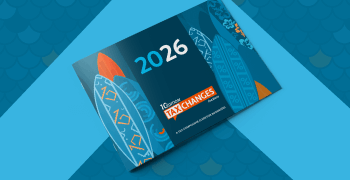Harmonized System codes: What are they and what do ecommerce businesses need to know about them?
Ecommerce businesses see countless benefits from global marketplaces like Amazon and eBay: They allow sellers to reach new customers, expand into new geographical regions, and maximize exposure for companies that may not have the marketing or advertising budgets to do so themselves.
However, selling across international borders can create headaches for companies that have to navigate complex customs duties and maintain import tax compliance. Any error can be costly if it results in late shipments or unexpected fees for buyers, which can erode consumer confidence and loyalty. Not getting this right could eventually spell disaster for businesses if left unchecked.
Luckily, the Harmonized System (HS) was conceived with these hurdles in mind. Most recently updated in 2017, HS codes create a “universal economic language and code for goods.”
These six-digit codes assigned to every physical good simplify Cross-Border shipping by providing international uniformity for businesses and customs departments alike. However, the complexity increases because each country then adds its own suffix to complete a code of 10–12 digits that corresponds to the country-specific duty rate for an item. With the applicable extended tariff code, businesses can declare and send items across international borders and international customs agencies can quickly decipher what products they’re receiving and where they’re coming from to get products in the hands of consumers faster.
Applying HS codes
Using HS code rules to assign a tariff code, commonly referred to as classification, requires knowing specific product information including what a product is, what it does, and what it’s made of. With that information, the HS rules can be applied, which may sound straightforward but is actually complex because these rules are subject to interpretation and legal precedent that’s been built and modified over time. Individual product nuances can also lead to complications. Furthermore, beyond the internationally harmonized first six digits, if sellers want to sell the same item in multiple countries, they’ll have to classify the same item for every country they want to sell to due to each elongated country suffix.

Simplifying the HS code process with automation
While HS codes streamline the process as items cross borders, the actual act of classification can be extremely complicated and near impossible for ecommerce retailers without the human or technological resources necessary to deal with the process. Luckily, implementing an automated solution allows ecommerce companies to quickly and confidently assign complete tariff codes to meet customs regulations for international trade without investing large sums of capital in bolstering human or technological resources.
The benefits of automation are immense, including:
- Timeliness: Ensures customer shipments arrive on time opposed to facing delays in customs. Customer satisfaction ties to business results, so product delivery delays will have a direct effect.
- Improved efficiency: With less time and resources dedicated to deciphering and assigning HS codes, ecommerce retailers can focus more on managing the growth and future of their business.
Automation provides ecommerce retailers a reliable solution that can scale and evolve alongside their business without the risks associated with the complexities of HS codes and international tax compliance. Avalara Item Classification, powered by machine learning, evaluates product-level details and assigns the most applicable tariff code per country.

Avalara Tax Changes 2026 is here
The 10th edition of our annual report engagingly breaks down key policies related to sales tax, tariffs, and VAT.
Stay up to date
Sign up for our free newsletter and stay up to date with the latest tax news.














